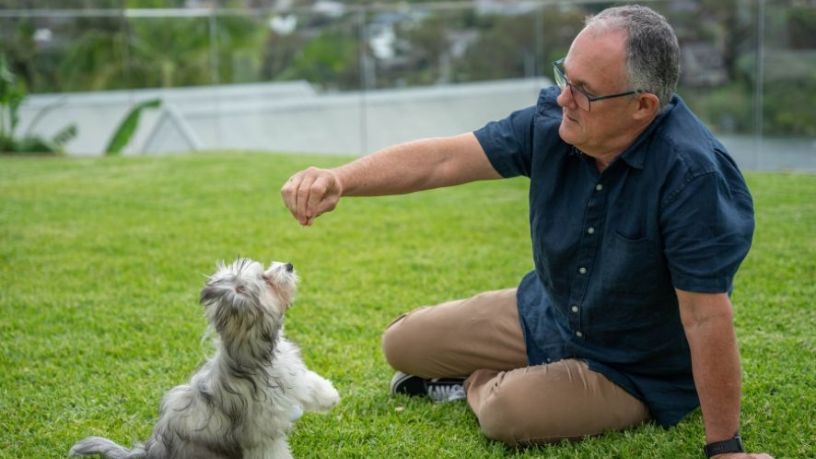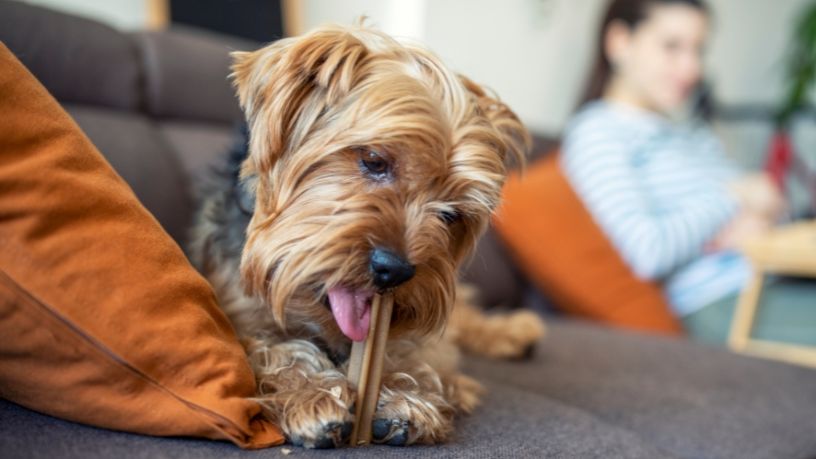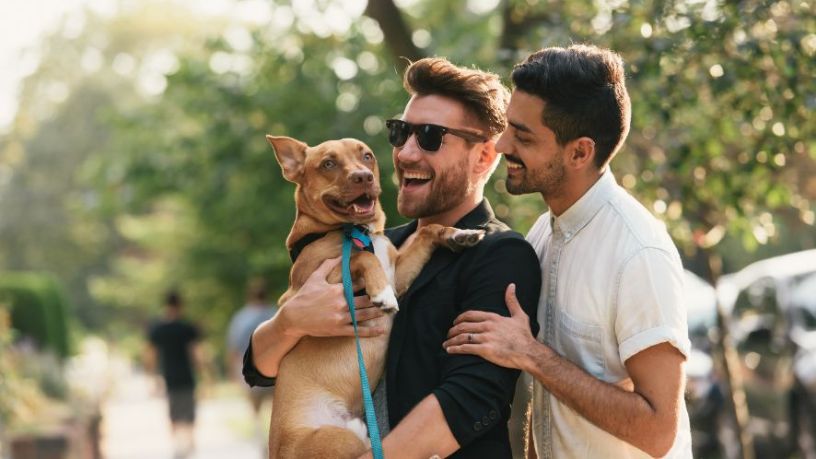Dog grooming includes everything from brushing and bathing them to trimming their claws.
On this page
Key takeaways
Always use a dog-friendly shampoo and conditioner as your everyday bathroom products are much too harsh on their skin.
If you’re not confident trimming your dog’s nails, you can ask your vet to show you how to do it safely.
Keeping your pup clean and well-groomed isn’t just about how good they look and smell. Basic grooming is essential for your dog’s health and hygiene, not to mention helping keep your home clean and sanitary.
Plus, everyday grooming, bathing and brushing at home won’t only save you a bundle of money but can also strengthen your connection with your four-legged friend.
“To help keep your dog happy and healthy, it's important to brush them, bathe them and clip their nails regularly,” says veterinarian and TV presenter Dr Katrina Warren. “Instead of seeing these activities as a chore, view them as important bonding time between you and your furry friend.”
When it comes to doing your own dog grooming, there are a few things you need to know to make it a pleasant experience for you and your pup. Read on for your essential dog grooming guide.
Know your dog's coat type
“It's important to note that different dog coats require different levels of care,” explains Dr Warren. “Dogs with a curly or wavy coat, such as poodle mixes, have thick curls close to the body which can easily knot close to the skin. This can get very uncomfortable for the dog. Owners of dogs with this type of coat need to brush their fur regularly with a slicker brush and follow through with a comb to check for knots.”
How to brush your dog
How often you brush your dog depends on the type of coat they have. In general, dogs with short coats don’t need as much brushing as dogs with medium to long coats. No matter what type of coat they have, your dog needs to be brushed to help remove loose hair and dead skin cells, prevent matts, distribute natural oils and remove any grass seeds or other bits and pieces caught in their coat.
Brushing your pup also gives you the opportunity to do a ‘health check’.
“One thing dog grooming is really good for is checking your pup from nose to tail for everything from fleas and ticks to rashes, lumps and bumps,” explains Dr Warren. “If you find anything unusual, monitor it and call your vet. And don't forget to check their ears and paws.”
Using a dog brush, gently brush your pup’s hair in the direction of the hair growth. This will loosen any tangles, knots or debris.
“Be careful around sensitive areas such as the stomach and ears,” advises Dr Katrina, “and try talking calmly to your dog as you’re brushing.”
If your dog shows signs of being stressed or unhappy while being brushed, take a break. You can always try again later.
How to bathe your dog
Unlike us, dogs don’t need to be washed every day. Bathing dogs too often can dry their skin out, causing irritations and other issues. If your dog has skin problems, check with your vet about the right bathing schedule and products for them.
Before bathing your dog, brush them to remove any knots or loose hair. Rinse them down with warm water, being careful to avoid getting water in their ears, eyes, nose or mouth.
Be sure to use a dog-friendly shampoo, rather than one from your bathroom cupboard. Human shampoo is too harsh for their skin. Do a patch test beforehand to make sure the product doesn’t irritate their skin or cause any reactions.
Thoroughly rinse the shampoo from their coat and apply a dog-friendly conditioner.
Once your dog is washed and fully rinsed, dry off as much of the moisture as you can with a large towel, give them a tasty reward for a job well done, and let them air dry.
How to cut a dog's nails
While daily exercise helps wear your dog’s nails down, they will need trimming if they get too long. While dog groomers and most vets can happily do this for you (for a fee), knowing how to cut a dog’s nails safely can save you time and money.
You can tell a dog’s nails need trimming when they are nearly touching the ground when your pup is standing. It’s important to only trim the tip, as cutting too short can cause bleeding and pain. Some dogs have transparent nails so it’s easy to see the blood vessel (which is a pinkish area) and avoid it. If your dog’s nails are darker and you can’t see the blood vessel, ask your vet to show you how to cut them.
And don’t forget their dew claws. These nails on the side of their legs aren’t worn down by exercise and may need trimming more often than their toenails.
If you’re not feeling confident, ask your vet to show you how to cut your dog’s nails safely.
Professional dog grooming
It’s important that all dog owners take time for dog grooming, but sometimes our pups need a bit of expert care.
“If you find matts or knots that you can't get out yourself, it might be worth considering a professional dog grooming session,” suggests Dr Warren. Some dogs need a little extra attention due to their fur types, so it’s important to ask your groomer how often you need to bring them in to tidy up their coat and nails.

At Bupa, trust is everything
Our health and wellbeing information is regularly reviewed and maintained by a team of healthcare experts, to ensure its relevancy and accuracy. Everyone's health journey is unique and health outcomes vary from person to person.
This content is not a replacement for personalised and specific medical, healthcare, or other professional advice. If you have concerns about your health, see your doctor or other health professional.
You might also like...
5 golden rules for dog training
Time to teach your dog the house rules? We’ve put together 5 tips to help make obedience training easy, stimulating, and a lot of fun for your fur-baby!
How to train your dog the right way
Done right, training can improve your pup’s confidence, help you create a loving and healthy bond, and be a lot of fun! But which training style is best?
The best food and treats for your dog's dental health
Even dogs don’t like going to the dentist. The good news is you can protect their teeth and gums between check-ups with some of their favourite foods.
Choosing the right dog for you
Learn how to choose the right dog for you by considering breed, lifestyle, adoption options and important factors such as health care and insurance.





